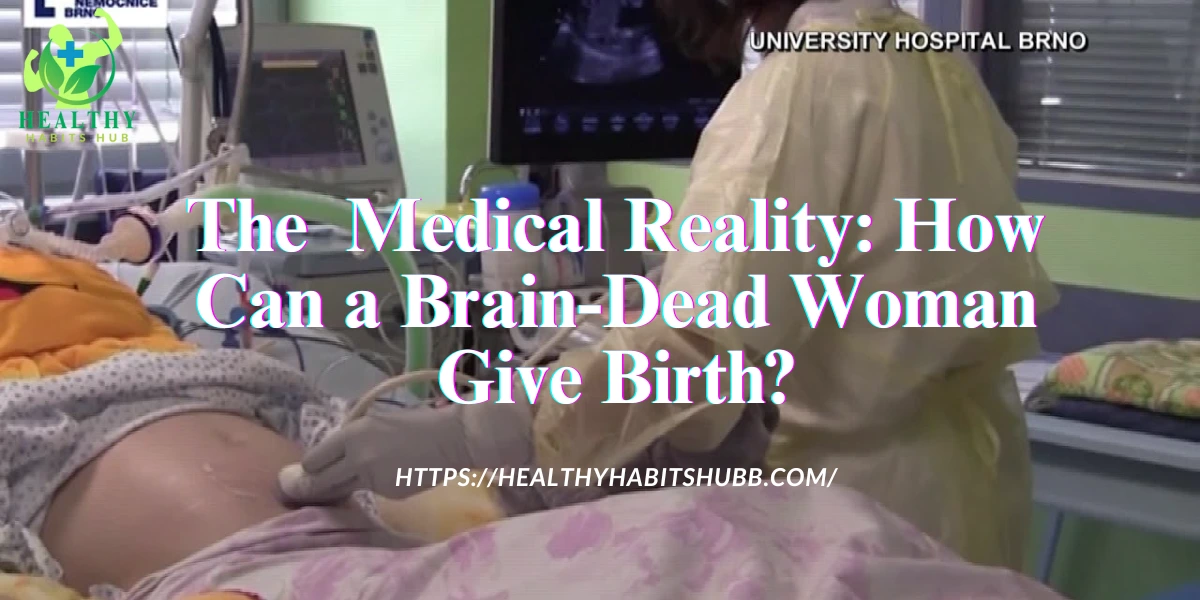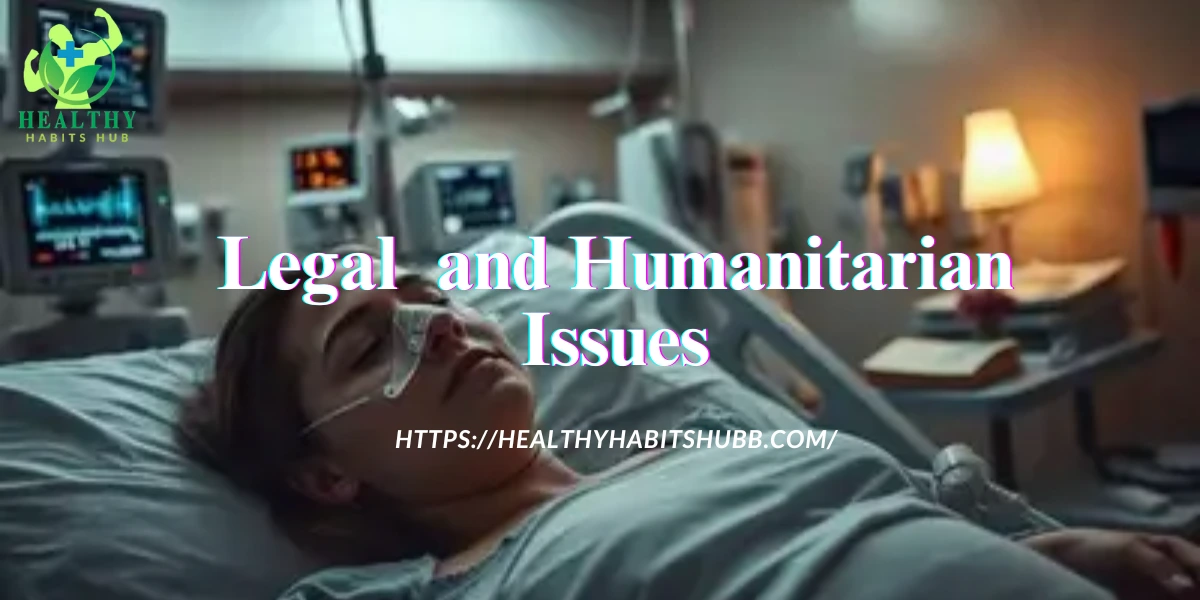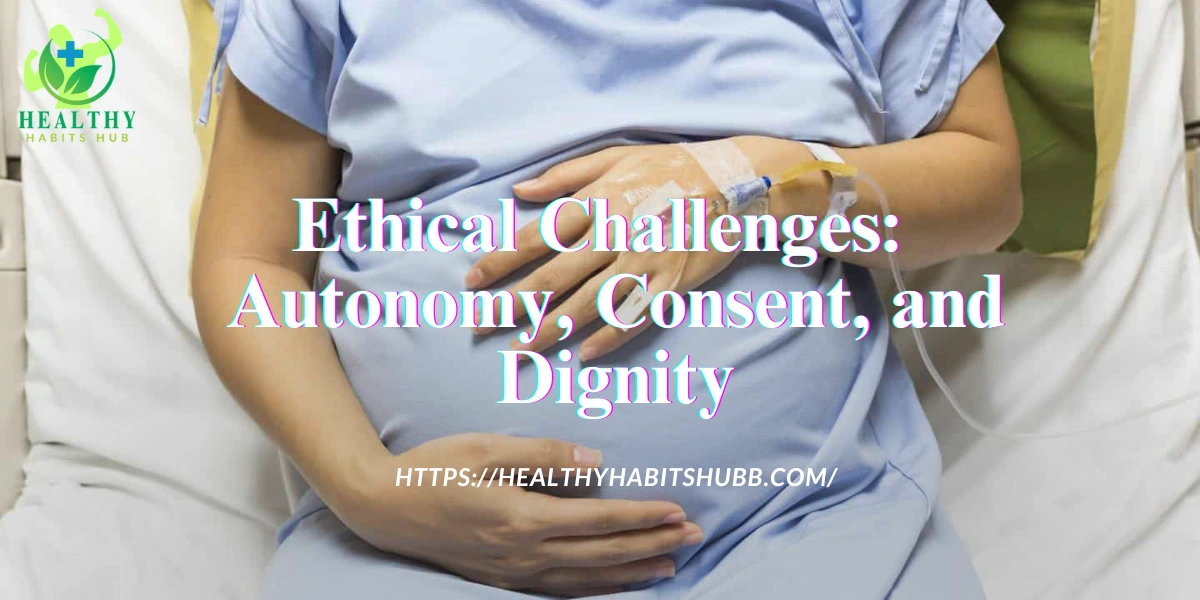When a Brain-Dead Woman Is a Mother: Dilemmas in Law and Medical Technology
Adriana Smith, a woman in Georgia who was declared brain dead while pregnant and sustained on life support until her baby could be born, is the latest case to reignite a global debate about the intersection of medicine, law and ethics. It’s a rare but intensely emotional situation that can leave families, doctors and lawmakers asking deep questions: What does it mean to be alive? Who makes the decision to remove life support? And what is the sweet spot between the rights of a mother and those of her unborn child?
The Medical Reality: How Can a Brain-Dead Woman Give Birth?
Table of Contents
Toggle
Brain dead is when there is irreversible loss of all function in the brain, including the brain stem. Medically and legally, a person who is brain dead is dead. But today with intensive care, the body’s heart, lungs (with a ventilator), and organs can be preserved and kept functioning, often for weeks or more than a month, even after the brain has died, as in the situation of pregnant women.
How Does It Work?
- Somatic Support: Machines breathe for the body and medications are used to control blood pressure and other body functions after brain death. Hormones and nutrients are given to support the pregnancy.
- Multi-Disciplinary Team Care: Groups consist of obstetricians, neonatologists, intensivists and ethicists work together to follow foetal growth and maternal well-being.
- Delivery: When the fetus is at viable gestational age — usually around 24 to 28 weeks — doctors do a cesarean section to deliver the baby.
Recent Example: Adriana Smith
In February 2025, Adriana Smith, 31 and a nurse, was found to be brain dead, nine weeks pregnant. Her body was kept on life support for almost four months in accordance with Georgia’s abortion law, which forbids an abortion after cardiac activity is detected. Her baby, Chance, was delivered by emergency cesarean section on June 13, 2025, weighing 1 pound 13 ounces. He is still in the neonatal intensive care unit, struggling to survive.
The Legal Landscape: Abortion Law to Personhood
Smith is also tied to Georgia’s newly passed strict abortion laws, following the U.S. Supreme Court’s overturning of Roe v. Wade in 2022. The state’s “heartbeat law” prohibits abortion after the presence of a fetal heartbeat can be detected, generally at approximately 6 weeks gestation, and recognizes the fetus as a legal person.
Georgia’s abortion laws, including its 2019 “heartbeat law,” have changed the legal status of fetuses and led to complicated moral quandaries such as Adriana Smith’s. Here’s what the framework does and what it means:
Georgia’s Heartbeat Law and Fetal Personhood
- Six-Week Ban: The law outlaws abortion after the detection of fetal cardiac activity (approximately six weeks), with exceptions for rape, incest, or risks to the mother’s life.
- Fetal Rights: It gives embryos and fetuses person status in law, affording them (or their carriers) the same legal recognition as a person who has been born under Georgia law. This move makes the act of terminating a pregnancy a crime that carries a penalty of up to 10 years in jail.
Effect on the Medical Decision-Making Process
Mandated Life Support: Hospitals understood the law to mandate ongoing somatic support for brain-dead pregnant patients like Adriana Smith, over the objections of family. Doctors, afraid of potential liability from stopping care (which might be interpreted as aborting the pregnancy), had not arrived yet.
Interference with Autonomy: When a patient has an advance directive that specifies no life support, the directive is commonly ignored if the patient is pregnant. The decision-making power is separated from the families, what Smith’s mother diagnosed as “torture” is an example.
Ambiguities and Conflicts in Law
No explicit guidance: The statute is silent regarding brain death, placing hospitals in the middle of competing interests (respect for the dead v. the rights of the fetus).
State vs. Family Rights: Georgia’s attorney general said the law did not require life support for brain-dead individuals, but hospitals such as Emory University continued to use it as a defense, revealing enforcement discrepancies.
Legal and Humanitarian Issues

Reduction to “Incubator”: Critics say the law equates brain-dead women to gestational vessels in a manner that violates bodily autonomy and human dignity. The case of Adriana Smith demonstrates that fetal rights are greater than those of a woman’s desires or family permission.
Racial and Equity Concerns: Advocates say that such laws would disproportionately affect Black women who have higher maternal mortality rates and systemic challenges accessing healthcare.
National Implications
Post-Roe Precedent: Georgia’s ban is part of a trend of the 14 other states with fetal personhood statutes, calling into question just how far states can go in the name of fetal interest when it conflicts with maternal autonomy.
Appeals for Reform: Democrats and bioethicists are calling for clearer exceptions to cover brain dead and terminally pregnant women, and for legislatures to weigh fetal viability against respect for the dead.
Legal Implications
Compulsory Life Support: Smith’s family was informed that according to Georgia law, doctors could not take her off of life support and take a breathing machine off of her, because it might be considered as ending a viable pregnancy.
No Explicit Exemptions: The law doesn’t define brain death one way or the other, thus giving hospitals the discretion of deciding whether or not a brain dead pregnant woman should be kept ‘alive’ as an “incubator”.
Family critiques: Smith’s mom April Newkirk, fumed that the family was not allowed any input: “We should have had a choice”.
National and Global Context
In other states and countries comparable legal quagmires have snarled attempts to make such decision, with court occasionally stepping in to resolve conflicts between families and doctors.
Ethical Challenges: Autonomy, Consent, and Dignity

It is between competing moral principles that cases such as Smith’s thrust society:
Autonomy and Consent
- Loss of Autonomy: A brain-dead woman cannot speak of these matters in her own words. If she did not leave a directive in advance, there will be guessing — by families and doctors — about her wishes.
- Advance Directives: Certain states disregard advance directives that state no life support if the patient is pregnant in favor of potential fetal life.
Dignity and Bodily Integrity
- Incubator Debate: Some critics have said that employing a body of a brain-dead woman to gestate a fetus in it, reduces the woman into a mere incubator, leading to intuition of lack of dignity and respect for the brain-dead.
- Traumatic For Family: Many families suffer from years of grief as they watch their loved one’s body being kept going artificially for months.
Best Interests of the Fetus
- Viability and Disability: Long-term somatic support and the healthy child. Preterm infants are at high risk of morbidity or mortality, and families are forced to weigh the potential consequences.
- Resource Allocation: Intensive care over weeks can stretch hospital resources and personnel given an uncertain chance of recovery.
Medical challenges: risks and results of therapy
Risks to the Fetus
- Prematurity: The majority of babies from brain-dead mothers are preterm, low weight and with high risk of morbidity.
- Issues from Prematurity: Hydrocephalus and/or organ immaturity is common.
- Survival Rates: In a systematic review, two thirds of women with an antenatal diagnosis of brain-death and who received prolonged somatic support delivered liveborn infants, however outcomes are highly variable depending on gestational age at brain stem death.
Risks to the Mother’s Body
- Infections: The mother’s body is at risk of infection, clots and organ failure, all of which require ongoing medical care.
- Organ Donation: There are instances when it is desired to donate the mother’s organs subsequent to delivery, to save other lives.
Precedents and Notable Cases

Karla Perez (Nebraska, 2015)
She was declared brain dead at 22 weeks into her pregnancy after suffering from a brain hemorrhage. Her family, and her doctors, kept her on life support for 54 days, long enough for her son Angel to be delivered by Caesarean section, at 30 weeks. Perez’s organs would eventually be donated and saved three lives.
Medical Response and Extended Life Support: Karla’s family and a medical team of 100 people at Methodist Women’s Hospital in Omaha were forced to make a tough decision after her diagnosis. Because the fetus was still too underdeveloped to be born, they agreed to keep Karla on life support to keep her pregnancy viable. This treatment, somatic support, required the use of machines and medications to maintain organ function and to support fetal development.
Karla’s body was maintained for 54 days in the hospital— a complicated and trying process for everyone involved. Her status was observed during this period, while attempts were made to treat the complications and maintain the optimal conditions for the unborn child.
Delivery and Outcome
On April 4, 2015, as Karla was declining, doctors delivered her baby, Angel Perez, by emergency Caesarean section at 30 weeks and three days gestation. Angel was born very small, weighing only 2 lbs 12.6 oz and had to be hospitalized in the NICU for several months, but was reportedly doing well and with minimal complications.
Karla was pronounced dead two days after Angel was born. In one last, gracious gesture, her family decided to donate her organs, and they saved the lives of four others.
Legacy and Significance
Perez’s case was the first one in the U.S. since 1999 of a brain-dead woman being kept on life support for a long enough period to deliver a baby that survived. The case illustrated the miraculous powers of modern medicine, the boundless devotion of healthcare providers and the impossible emotional and ethical dilemmas confronting families placed in such heartbreaking predicaments.
Her journey is described as a “huge leap of faith” on the part of the medical staff and a testament to the lasting hope and determination of families in the aftermath of loss.
“Karla’s passing was devastating, but her legacy is beyond remarkable,” said Sue Korth, vice president of Methodist Women’s Hospital.
Angel Perez was eventually released from the hospital to go live with his maternal grandparents, following his mother’s footsteps and a promise found within a tragedy.
Case Reports and Literature
A review of medical literature turned up 35 documented cases of brain-dead pregnant women, 27 of them resulting in live births. Most positive results were obtained when brain death occurred after 24 weeks of pregnancy.
The Impact of Law and Policy: What Should Be the Primary Consideration?

Legal Uncertainty
- Differences by State: The laws vary greatly throughout the U.S. and in other countries. Some mandate continuing life support for pregnant women, while others grant families and doctors discretion.
- Need for Clarity: Experts advocate for clearer direction on exercising discretion to respect the maternal advance directive, consider the best interests of the foetus, and respect the family’s autonomy.
Ethical Guidelines
- Best Interests Model: Some theorists propose a best interests model, which balances the likely results for the mother (as she would have wanted) and for the fetus.
- Multidisciplinary Decision Making: Hospitals may form ethics committees that assist families with these difficult decisions.
The Human Side: Words from Families, and From Clinicians
Family Perspectives
- Grief and Hope: For families like Smith’s, it’s two rollercoasters of emotions — mourning a death, and hoping for a life.
- Having no choice: Many families feel helpless, stuck between the law and their conscience.
Clinician Perspectives
- The emotional burden: Health care workers have to confront the moral distress that comes from balancing his or her duty with the fetus with respect for the dignity of the pregnant woman.
- Resource burden (If pregnant): Prolonged intensive care of a brain-dead pregnant woman is physically and psychologically demanding on healthcare providers.
The Future: What We’ve Learned and What Remains Open for Inquiry
Adriana Smith’s situation, and others like it, make the need for these reforms critical:
- More reasonable laws and policies which will protect maternal autonomy and fetal well-being.
- Advance directives whereby a woman can outline how she feels about life support in relation to pregnancy.
- Guidance for providers and families grappling with these rare but wrenching decisions.
Conclusion: An Uncommon, Yet Significant, Predicament

The delivery of a baby from a mother who was declared brain-dead is both a medical miracle and a resounding reminder of the inadequacy of law and ethics in the face of life’s tragic contingencies. Each is a special case, determined by medical facts, legal frameworks and the values of the people involved. As the conversation plays out in society, families like Adriana Smith’s will continue to be at the center of the debate.
Related article link:
For further reading and in-depth analysis of the bioethical dilemmas surrounding post-mortem gestation, visit this comprehensive article:
https://www.anahuac.mx/mexico/CADEBI/en/noticias/case-adriana-smith-and-bioethical-dilemmas-post-mortem-gestation

